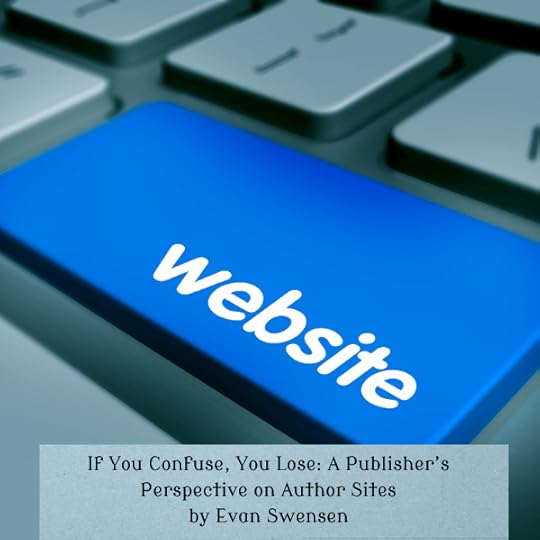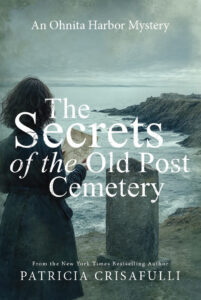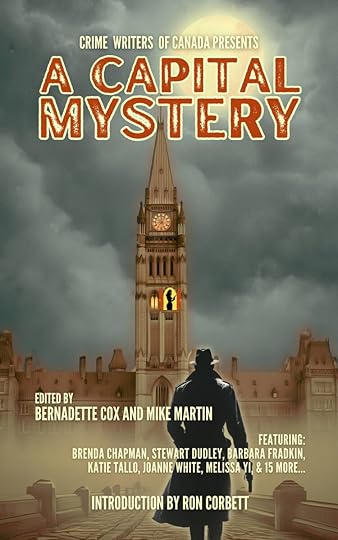Elizabeth Spann Craig's Blog
November 30, 2025
If You Confuse, You Lose: A Publisher’s Perspective on Author Sites
By Evan Swensen
When I first heard Donald Miller say, “If you confuse, you lose,” I stopped in my tracks. I’ve spent decades working with writers and publishers, and I’ve seen that simple truth play out again and again. Writers often believe cleverness or complexity will sell books. It won’t. What sells is clarity.
The Shifting Landscape of Book DiscoveryPublishing has never been static. In my early years, bookstores, flyers, and brochures carried the weight of discovery. If you wanted to reach readers, you had to fight for space on shelves or invest in print promotions. But the landscape shifted. Amazon replaced bookstores as the hub. Flyers and brochures were replaced by email lists and social media posts.
And then came a new assumption: every author needs a big, elaborate website. But today, that isn’t entirely true. Readers don’t primarily discover books on author sites. They discover them through podcasts, book clubs, social shares, or—most often—directly on Amazon.
So does a website still matter? Absolutely. But its role has changed.
The Three Essential Questions Every Site Must AnswerDonald Miller’s Building a StoryBrand breaks down the purpose of any website into three simple questions:
What do you offer?How does it make life better for the reader?How do they get it?That’s it. If those answers aren’t front and center, readers click away.
In my experience, the difference between an author site that works and one that fails doesn’t come down to design trends, coding tricks, or fancy features. It comes down to clarity.
Simplicity Always WinsI’ve watched authors pour months into sprawling sites filled with complex menus, hidden subpages, and blogs that nobody read. The result? Frustration, not sales.
On the other hand, I’ve seen minimalist sites—just a book cover, one line describing the experience it offers, and a bold “Buy Now” button—outperform expectations. Readers didn’t need a labyrinth; they needed a front door.
Think of it like walking into a room. If the room is cluttered, you hesitate. You don’t know where to sit, and the chaos feels overwhelming. But if the room has a chair by the fire and someone smiling, you know exactly what to do.
A good author website should feel like that chair by the fire: warm, welcoming, and obvious.
The Danger of NeglectEven the best-built website loses power if it’s ignored. I’ve seen clean, simple pages slowly transform into digital ghost towns—outdated bios, broken links, old event announcements. Instead of inviting readers in, they signal neglect, like walking into a house with cobwebs in the fireplace and a broken chair in the corner.
Your site should never make a reader wonder if you’ve stopped writing.
The Author Website ChecklistFor most writers, the essentials aren’t complicated. You need:
Your name and photo. Readers want to know who you are.Your books. Covers, blurbs, and clear links to buy—front and center.A short bio. Something that connects with readers personally.An email sign-up. Your most valuable tool for staying connected.Contact and social links. A way for readers or collaborators to reach you.That’s enough. Anything more risks confusing the very people you’re trying to reach.
Why Clarity Builds TrustHere’s the truth: Amazon already offers trust, speed, and convenience. Your site doesn’t need to replace Amazon. What it can do is add the personal touch—a place for readers to see your face, hear your story, and perhaps buy an autographed copy directly from you.
Your site’s job is not to do everything. Its job is to welcome readers, point clearly to where they can get your books, and then get out of the way.
Resist the Temptation to OvercomplicateThe hardest part for writers is resisting the temptation to add more. More words. More features. More cleverness. But each “extra” risks clutter. And as Miller reminds us, if you confuse, you lose.
So yes, you still need a website. But keep it simple. Think of it as a front door, not a warehouse. A chair by the fire, not a cluttered room.
When you get clarity right, your website does its job quietly—making space for your real focus: writing the next book and connecting with the readers who are waiting to hear your voice.
Evan Swensen is the founder of Publication Consultants, an Alaska-based publishing company dedicated to helping writers bring their stories to life. As a publisher, author, and editor, Evan has guided countless authors through the journey of turning manuscripts into books. With decades of experience, he continues to champion the power of storytelling and the importance of connecting with readers.
If You Confuse, You Lose: A Publisher’s Perspective on Author Sites
Share on X
The post If You Confuse, You Lose: A Publisher’s Perspective on Author Sites appeared first on Elizabeth Spann Craig.
November 29, 2025
LitLinks

by Elizabeth S. Craig, @elizabethscraig
LitLinks are fed into the Writer’s Knowledge Base search engine (developed by writer and software engineer Mike Fleming) which has over 70,000 free articles on writing related topics. It’s the search engine for writers. While you’re there, check out the Writer’s Digest award-winning Hiveword novel organizer.
Have you visited the WKB lately? Check out the new redesign where you can browse by category, and sign up for free writing articles, on topics you choose, delivered to your email inbox! Sign up for the Hiveword newsletter here. Follow the WKB on Facebook here.
Audio Interview: How Authors Can Earn Income and Visibility Through Libraries With Dale L. Roberts and Sylvia Hubbard: Building a Sustainable Author Future Beyond GEO: By Deleyna MarrAnthology Editing: Advice and Insights from Those Who’ve Been There: by Lisa Timpf @janefriedman.comRescue Your Resolutions: by Rochelle MelanderLOOK! Finding Writing Ideas: by DL FinnCollecting or Creating? By Kristin Hacken SouthLet’s Play Instead: By Natalie HartFive Books With Narrators Learning to Live in Unexpected Lives: By Kelly SundbergSix Very Depressing Books That Might Just Cheer You Up: By Rabih Alameddine9 Short Stories That Deserve More Love: by Ismail D. SoldanNo Such Thing as Writer’s Block: by Tisha Marie Reichle-AguileraHow Do You Write a Novel with 14 Different Authors? Carefully. by Rick PullenReclaiming Your Time: from Fox Print EditorialBooks Aren’t Magic Empathy Pills (But They Help): By Maris KreizmanWhat’s your Writer Identity? How Your Writing Beliefs Impact Your Writing: By Sarah E. PearsallSo You Want to Write a Novel: Learning Your Craft: by Liz GauffreauThe Power of Giving Up: By Greer MacallisterAre You a Writing Imposter? by Karen CioffiHow to Learn to Be a Writer: by Philip AthansThird Party Validation for Writers: By Steven PressfieldIs Writing Hard Because We Make It Hard? by Meg DowellHow to Best Teach Writing & AI Disruption: by T.J. MurphyWhat Good Are Your Cracks? by Garry RodgersWhy Fictionalize Memoir? by Cecile Popp @janefriedman.com‘This Story Defies Genre!’ Why That’s NOT The Flex You Think It Is: by Lucy V HayToys in Crime Fiction: @mkinberg.bsky.socialIn The Spotlight: Carolyn Wilkins’ Murder at the Wham Bam Club: @mkinberg.bsky.socialAccountants in Crime Fiction: @mkinberg.bsky.socialLearning to Say “Yes, and” as Authors: The Creative Alchemy of Cowriting a Thriller: by Christina Baker Kline and Anne BurtEnemies to Lovers: from MythcreantsWhere Is All the SFF Theater? – by Monica CrossWriters: How to Read Email Reports to Improve Your Newsletters and Book Sales: by Kate HuffInternational Children’s Publishers Mobilize For a Stronger Future: by Eric DupuyMy Attitude Toward Helping With Copyright: by Dean Wesley SmithIf a Famous Author Calls, Hang Up: Anatomy of an Impersonation Scam: @victoriastrauss.comRoyalties in Arrears: Mango Publishing / Blushing Books / Bottlecap Press: @victoriastrauss.comDon’t Leave Out the Good Stuff: by James Scott BellThe quiet beginning – one trick to keep the reader’s attention: @rozmorris.bsky.socialThe Power of Stress, Tension, and Conflict: by DiAnn MillsDissecting Creative Guides: by Lisa MillerWriting 101: How to Fix an Infodump: by Becca PuglisiSyntax: Definition, Examples, and Writing Tips: by Millie DinsdaleTips from a beta reader: from cranberry-queenHow to Craft a Tense School Plot That Isn’t Absurd: by Oren AshkenaziForeshadowing in Writing: By Tammy BurkeWhy Your Book Needs a Subplot: by Gabriela PereiraWhat is Truth in Fiction? By Donald MaassPlaying with presence on the page: by Anne JanzerWhen all is not as it seems: the tantalizing wrongness that precedes epic twists: by Nicola AlterWriters: Will Outlining Your Story Save Time? By Linda WilsonStory Structure: The Case For Building A Ranch, Not A Tri-Level: By PJ ParrishMaybe Planning and Plotting Are Inspiring After All: by Nicole PylesManaging Criticism: by Mary Ann de StefanoMake Yourself the Most Useful Writer in Your Critique Group: by Lisa PoissoWriting: Put Scenes to Work: by Linda S. ClarePlot As A Utility: By John Gilstrap10 books to make you a better author: by J.D. Lasica
The Top Writing Links From Last Week Are On LitLinks:
Share on X
The post LitLinks appeared first on Elizabeth Spann Craig.
November 22, 2025
LitLinks

by Elizabeth S. Craig, @elizabethscraig
LitLinks are fed into the Writer’s Knowledge Base search engine (developed by writer and software engineer Mike Fleming) which has over 70,000 free articles on writing related topics. It’s the search engine for writers. While you’re there, check out the Writer’s Digest award-winning Hiveword novel organizer.
Have you visited the WKB lately? Check out the new redesign where you can browse by category, and sign up for free writing articles, on topics you choose, delivered to your email inbox! Sign up for the Hiveword newsletter here. Follow the WKB on Facebook here.
Happy Thanksgiving to my US readers! I’ll be taking tomorrow off in observance. See you back here next Sunday.
How To Clean Dirty Book Links: by Sue ColettaSeven Lessons for My Past Self on Running a Small Press: by Holly Lyn Walrath7 Smart Ways to Branch Out as a Freelance Writer: by Robyn RosteVoice-Changers vs. AI-Generated Voices in Audiobook Production: by Beem Weeks‘Flesh’ wins 2025 Booker Prize: ‘We had never read anything quite like it’: by Andrew LimbongConference Words of Wisdom: by Dale Ivan SmithHere are the winners of the 2025 National Book Awards: by Andrew LimbongALA Announces Shortlist for 2026 Andrew Carnegie Medals: by Andrew Albanese5 Fun Ways to Play with Language: By L.L. Barkat Time Travel for Writers: By Gwendolyn WomackWhy Your Writing Muse Isn’t Your Friend: by Nicole WhislerFostering Creativity in an Age of Anxiety: By Emilie-Noelle ProvostNovel Writing Tips That Are Working for Me Right Now: by Meg DowellIf, Just, Maybe: by Jillian ForsbergWhen the World Falls to Pieces, Write: by Rochelle MelanderHow We Can Improve Our Lives by Going Outside: By Marc BermanThe Literary Film & TV You Need to Stream in November: by Emily Temple“Your Book Deserves To Reach a Larger Audience”: by James Scott BellHow Writers Are Like Backyard Chickens: by Sue ColettaBenefits of Writing with Children: by Charles YallowitzWanting to Cheat on My “Literary” Novel: By Kristen ArnettDoing What You Have to Do: from Fox Print EditorialIndie Author Culture: Our Obligations: by Audrey DriscollPlanning the writing expedition: by Anne JanzerCuring a Case of the Authoring Mondays: by KM AllanIs writing like exercise for you? by Daphne Gray-GrantSmall Steps, Big Magic: The Power of Micro-Inspired Action: by Suzanne LieuranceAI doesn’t belong in journaling: by Victoria SongHow to Keep Writing When the Publishing World Hits Snooze: by Gabriel ValjanMaking the Best of Chance Encounters: by Terry OdellLow Fantasy: by CS BoyackThe Activist Memoir: How to Write for Change: by Stephanie Mitchell @janefriedman.comIn The Spotlight: Martin Cruz Smith’s Havana Bay: @mkinberg.bsky.socialCrafting Memorable Sidekicks for Cozy Mysteries: Colonel Mustard in the Ballroom: How Setting Shapes Mystery: by Michelle BarkerAncient Rituals and Belief Systems in Crime Fiction: @mkinberg.bsky.socialTwists in Crime Fiction: @mkinberg.bsky.socialIn The Spotlight: Jo Spain’s Dirty Little Secrets: @mkinberg.bsky.socialReservoirs as Settings in Crime Fiction: @mkinberg.bsky.socialWhat I Learned at Romance GenreCon: 3 Essential Tips for Authors: by Shannon A ThompsonHow to Think About the Future, With a Little Help From Science Fiction: By Nick FosterShort Stories Don’t Count On Your Permanent Record: By John GilstrapIs Your Amazon Book Page Doing Its Job? by Penny SansevieriHave You Written a Letter to your Readers? by Hank Phillippi RyanWhy I Won’t Chase the Post That Went Viral: by Lesley Krueger @janefriedman.comCheck Out the Best Website Builder for Authors: by Bryn DonovanHappy 90-Something, Dear Paperback. Here’s Hoping You Survive to 100: by Rosemary JonesWhy Query Letters Feel Like Going Nuts: by Oliver BlakemoreCopyright Registration Issues: by Dean Wesley Smith“In Medias Res” Means in the Middle, but What Is the Middle? by Chris WinkleFlog a Pro: Would You Turn the First Page of this Bestseller? By Ray RhameyHow to Write Killer Chapter Endings That Hook Readers: By Jenn WindrowHow to Drill Inside Your Villain’s Head: by Debbie BurkeHow to develop character wounds and misbeliefs: by Selene Grace SilverShowing Character: The Layer-by-Layer Reveal: By Patricia CrisafulliDoes My Character Have to Arc Out of Their Want? by September C. FawkesThe Vocabulary of Emotion: Five Ways to Convey Emotion in Fiction: By Susan FletcherFive Qualities Every Hero Needs: by Chris WinkleHow to Use the Four Levels of Conflict to Strengthen Your Story: by Angela AckermanWriting Better Character Conflicts With the 5 Conflict Management Styles: by K.M. WeilandHow to Craft Accurate Fight Scenes by Alex JemettaThe Power of Dialogue: More Than Just Spoken Words: by CS Lakin“Heed this advice!” she said desperately: by PJ ParrishEdgar Allen Poe’s Writing Tips: By B.K. StevensThree-Act Analysis of The Great Gatsby: by Gabriela PereiraThe Studio TV Pilot Beat Sheet Analysis: by Shari SimpsonThe Power of Why: By Kathleen McClearyPlay the Long Game: By Kathryn CraftMemoir On a Hill: Finding the Best Way to Tell the Story of America: By Jason MottThe Fastest, Most Reliable Way to Improve Your Writing Craft: by Jenny HansenLessons From a 25-Year Search for the ‘Secret Sauce’: by Sharon KurtzmanWriting Neurodivergence in Crime Fiction: by Amie SchaumbergTone-Setting Prologues? by Chris WinkleDeveloping Antagonism in Your Story: by Erin Halden @janefriedman.comDo Books Need to be Long? by Philip AthansHow to Write Stories That Matter to You and Your Readers: by Lynette M. BurrowsA few important tips for writing fiction: by Linda S. ClareWhat If the Secret to Writing More … Is Writing Less? by Meg DowellUnlock The Freedom To Cheat Deep POV: By Lisa Hall-WilsonPlot : Flatlands or Hill and Dale? by N.L. HolmesHow Much Research Is Too Much? by Ellen BuikemaAffect vs Effect: The Difference Explained: by Millie DinsdaleBad Grammar in Song Lyrics: By Arlene MillerPruning the Problem Tree: By Juliet MarillierThis Week I Saved a Darling: by James Scott BellGetting Feedback On Your Writing: from MythcreantsA 5-Minute Fix for a Blah Scene: Creating Character-Driven Settings: Ask Your Characters, Not the Chatbots: by Jane K. Cleland5 Ways to Engage All 5 Senses Without Overwhelming Readers: by Lynette M. BurrowsWriting With Subtext: By Tammy BurkeWords With No Translations: By Arlene MillerThe tired Millennial’s guide to a few of the Cambridge Dictionary’s brand new words: By Brittany AllenCan AI Edit Your Book? from Fox Print EditorialWorking Writers: Nalini Jones on How Having a Day Job in Music Helped Her Write a Novel: https://lithub.com/working-writers-nalini-jones-on-how-having-a-day-job-in-music-helped-her-write-a-novel/
The Top Writing Links From Last Week Are On LitLinks:
Share on X
The post LitLinks appeared first on Elizabeth Spann Craig.
November 16, 2025
Showing Character: The Layer-by-Layer Reveal
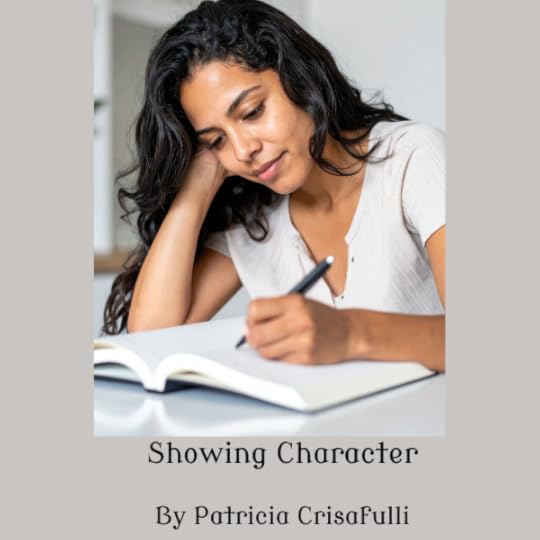
By Patricia Crisafulli
“The minute you walk out this door you show your character to everyone who sees you.”
When I was young, my mother admonished me into good behavior with these words. What she did not know, and I could not fully appreciate until many years later, was just how valuable her advice was for writing.
Layer by layer, we reveal the character of our protagonists and antagonists by what they say and do, particularly in interactions with others.
There are endless possibilities in character-driven novels like cozy mysteries, while also advancing the plot. Here are some examples from my Ohnita Harbor Mystery Series:
Edgy, Has Trust Issues, Buries Feelings: That’s the thumbnail description of my protagonist Gabriela Domenici, a 40-year-old single mother who had to leave her dream job at the New York Public Library and move back to her hometown, and now longs to return to New York City. In my first novel, The Secrets of Ohnita Harbor , I began revealing the many sides of her character as Gabriela reacts to the tragic drowning death of a local banker with whom she’d had a brief exchange earlier that day.“… She made a cup of tea, scrubbed splotches from her counter, then started cleaning out the vegetable bins in the refrigerator. As she worked, Gabriela replayed her conversation with Ellyn that morning and the invitation to have lunch. Maybe it hadn’t been just social—perhaps Ellyn had been troubled and wanted to talk. And she had been too busy to make time for her … Gabriela began scraping a dried spinach leaf from a glass shelf inside the refrigerator, trying to evade another reason she had avoided Ellyn’s invitation until she had to confront the thought. She didn’t want to become invested in anyone in this town so that when she left, it would be a clean break.”
Prickly and even off-putting at times, yes. But in that manic scraping of the dried spinach leaf we see Gabriela’s grief, the bitterness of her regret, and her desire to do something to channel those feelings.
Human vs. Nature. It’s one of the classic conflicts in literature and an opportunity to reveal another aspect of character. In the opening of The Secrets of Still Waters Chasm , a hike on a beautiful fall day becomes emotionally triggering for Gabriela when she’s suddenly overwhelmed by irrational fears.“As she hoisted her backpack, Gabriela imagined yellow eyes peering out of the woods and her thoughts soured. Would those animals slink away from them, not wanting to be seen, or would they sense the vulnerability of two humans alone? Suddenly she felt certain something really was watching them. Her chest tightened and her breath quickened. Her ears strained to detect any sound other than the wind swishing the branches. A twig snapped and the clearing seemed to darken, as if thick clouds blotted out the sky. Her throat constricted, and she fingered the one-inch scar on her throat from a knife that, just three months ago, had flirted with her carotid artery. Glancing over, she saw Daniel adjusting the laces of his hiking boots as if nothing had happened. Because nothing did, she scolded herself.”
In that scene, much is revealed about Gabriela’s interiority, including her desire to dismiss her fears and desensitize herself to trauma (which are major motivations for how she acts in the novel).
Conflict Sparks Self-Disclosure. In my newly released novel, The Secrets of the Old Post Cemetery , Gabriela’s assumptions about how her world works are challenged after her boyfriend, Daniel Red Deer, is accused of a serious crime and hospitalized with critical injuries (slight spoiler alert). When Daniel’s sister, Rose, comes to town, Gabriela tries to assure her that the state police know him, which she believes will work in his favor.“‘Look, you don’t get this,’ Rose shot back. ‘The laws that protect you blame us.’ Heat flooded Gabriela’s face. Rose was right; she had no idea other than what she read—how the Thanksgiving stories she’d learned as a child of happy Pilgrims and friendly Indians had cloaked uglier truths of lands stolen from sovereign peoples and diseases used as weapons. Daniel was part Native American, but he never talked much about what that identity meant to him. Afraid of saying the wrong thing, she hadn’t asked him either. To be his life partner, she would have to change their dialogue.”
A Few Tips:
Show your characters among the people they care about to reveal their compassion, kindness, loyalty, and other positive aspects. Who makes it safe for them to expose their softer side, and when do they hold back?Divulge their insecurities, self-doubts, and feelings of inadequacy as they interact with those who challenge them. What’s their reaction—do they cower or bully others? Immerse them in a setting to show where they are most comfortable (relaxed, at home, in control)—and where they are uncomfortable (fearful, irritable, challenged).Layer by layer, our protagonists and antagonists reveal their character through interactions with others. What we learn just might surprise us.

Patricia Crisafulli is a New York Times bestselling author and an award-winning fiction writer. Her latest novel, The Secrets of the Old Post Cemetery, was published in October 2025 by Woodhall Press. It is the third novel in the Ohnita Harbor Mystery Series.
Showing Character: by Patricia Crisafulli
Share on X
The post Showing Character: The Layer-by-Layer Reveal appeared first on Elizabeth Spann Craig.
November 15, 2025
LitLinks

by Elizabeth S. Craig, @elizabethscraig
LitLinks are fed into the Writer’s Knowledge Base search engine (developed by writer and software engineer Mike Fleming) which has over 70,000 free articles on writing related topics. It’s the search engine for writers. While you’re there, check out the Writer’s Digest award-winning Hiveword novel organizer.
Have you visited the WKB lately? Check out the new redesign where you can browse by category, and sign up for free writing articles, on topics you choose, delivered to your email inbox! Sign up for the Hiveword newsletter here. Follow the WKB on Facebook here.
How To Clean Dirty Book Links: by Sue ColettaSeven Lessons for My Past Self on Running a Small Press: by Holly Lyn Walrath‘Flesh’ wins 2025 Booker Prize: ‘We had never read anything quite like it’: by Andrew Limbong5 Fun Ways to Play with Language: By L.L. Barkat If, Just, Maybe: by Jillian ForsbergWhen the World Falls to Pieces, Write: by Rochelle MelanderHow We Can Improve Our Lives by Going Outside: By Marc BermanThe Literary Film & TV You Need to Stream in November: by Emily Temple“Your Book Deserves To Reach a Larger Audience”: by James Scott BellHow Writers Are Like Backyard Chickens: by Sue ColettaBenefits of Writing with Children: by Charles YallowitzLow Fantasy: by CS BoyackIn The Spotlight: Martin Cruz Smith’s Havana Bay: @mkinberg.bsky.socialCrafting Memorable Sidekicks for Cozy Mysteries: Colonel Mustard in the Ballroom: How Setting Shapes Mystery: by Michelle BarkerAncient Rituals and Belief Systems in Crime Fiction: @mkinberg.bsky.socialWhat I Learned at Romance GenreCon: 3 Essential Tips for Authors: by Shannon A ThompsonWhy I Won’t Chase the Post That Went Viral: by Lesley Krueger @janefriedman.comCheck Out the Best Website Builder for Authors: by Bryn Donovan“In Medias Res” Means in the Middle, but What Is the Middle? by Chris WinkleHow to Write Killer Chapter Endings That Hook Readers: By Jenn WindrowHow to develop character wounds and misbeliefs: by Selene Grace SilverThe Vocabulary of Emotion: Five Ways to Convey Emotion in Fiction: By Susan FletcherHow to Use the Four Levels of Conflict to Strengthen Your Story: by Angela AckermanWriting Better Character Conflicts With the 5 Conflict Management Styles: by K.M. WeilandThe Power of Dialogue: More Than Just Spoken Words: by CS Lakin“Heed this advice!” she said desperately: by PJ ParrishEdgar Allen Poe’s Writing Tips: By B.K. StevensThree-Act Analysis of The Great Gatsby: by Gabriela PereiraThe Power of Why: By Kathleen McClearyPlay the Long Game: By Kathryn CraftMemoir On a Hill: Finding the Best Way to Tell the Story of America: By Jason MottThe Fastest, Most Reliable Way to Improve Your Writing Craft: by Jenny HansenPlot : Flatlands or Hill and Dale? by N.L. HolmesAffect vs Effect: The Difference Explained: by Millie DinsdalePruning the Problem Tree: By Juliet MarillierGetting Feedback On Your Writing: from MythcreantsA 5-Minute Fix for a Blah Scene: Creating Character-Driven Settings: Ask Your Characters, Not the Chatbots: by Jane K. ClelandWords With No Translations: By Arlene MillerThe tired Millennial’s guide to a few of the Cambridge Dictionary’s brand new words: By Brittany AllenCan AI Edit Your Book? from Fox Print EditorialWorking Writers: Nalini Jones on How Having a Day Job in Music Helped Her Write a Novel: https://lithub.com/working-writers-nalini-jones-on-how-having-a-day-job-in-music-helped-her-write-a-novel/
The Top Writing Links From Last Week Are On LitLinks:
Share on X
The post LitLinks appeared first on Elizabeth Spann Craig.
November 9, 2025
Crafting Memorable Sidekicks for Cozy Mysteries
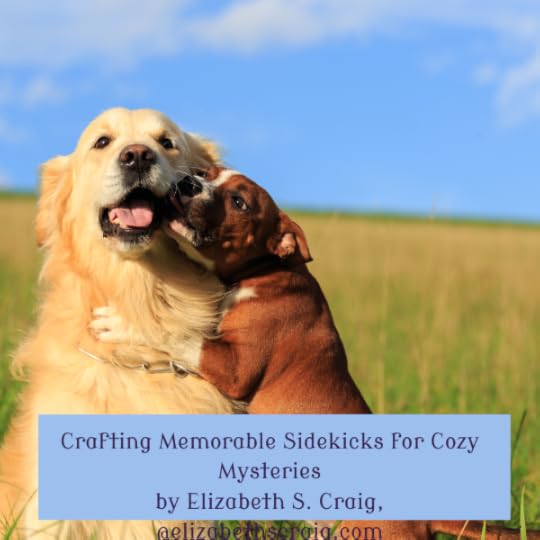
by Elizabeth S. Craig, @elizabethspanncraig.com
Sidekicks are important characters in cozy mysteries. They keep our sleuth from having a lot of interior monologue about suspects and motives, for one thing (which can get very boring to read). But they play other big roles in our stories, too.
Give Them a Life Beyond the SleuthI’ve learned that the most memorable sidekicks have identities independent of the main character. In my Myrtle Clover series, I gave her sidekick, Miles, a job as a retired engineer, specific hobbies, and his own social connections. This approach brings fresh perspectives and storylines into the books. A sidekick who runs the local bakery brings completely different community insights than one who works at the historical society or retirement home.
Create Productive ContrastPair a cautious protagonist with an impulsive sidekick (Jane’s careful planning versus John’s spontaneous decisions)Match analytical thinking with intuitive hunchesBalance a rule-follower with a rule-bender (a sleuth who goes by the book working with someone who’ll peek through windows)Build in Useful AccessFor me, sidekicks really shine when they open doors my sleuth can’t enter alone. Valuable sidekicks might be the neighbor who knows everyone’s business, the administrative assistant with access to private records, or the bartender who hears local secrets.
Allow for Growth and SurpriseStatic sidekicks eventually become predictable. It’s worth giving your supporting characters their own arcs of discovery, challenge, and change across your series. It keeps things fresh for both you and your readers.
Balance Reliable Traits with Hidden DepthsReaders seem to appreciate characters with recognizable signatures—maybe it’s the sidekick’s catchphrase, collecting habit, or legendary baking skills. But let them also reveal surprising talents or unexpected vulnerabilities.
Which mystery sidekick has stayed with you? I was always partial to Poirot’s Captain Hastings. :)
Craft sidekicks who bring dimension, contrast, and essential narrative functions to your mysteries:
Share on X
The post Crafting Memorable Sidekicks for Cozy Mysteries appeared first on Elizabeth Spann Craig.
November 8, 2025
LitLinks

by Elizabeth S. Craig, @elizabethscraig
LitLinks are fed into the Writer’s Knowledge Base search engine (developed by writer and software engineer Mike Fleming) which has over 70,000 free articles on writing related topics. It’s the search engine for writers. While you’re there, check out the Writer’s Digest award-winning Hiveword novel organizer.
Have you visited the WKB lately? Check out the new redesign where you can browse by category, and sign up for free writing articles, on topics you choose, delivered to your email inbox! Sign up for the Hiveword newsletter here. Follow the WKB on Facebook here.
Should you make changes to your editing business? by Louise HarbyAustralia’s Helen Garner Wins the UK’s £50,000 Baillie Gifford Prize in Nonfiction: by Porter AndersonWriting: What to Expect After the Conference: by Linda S. ClareFinding Your Writing Flow After NaNoWriMo: by Michael SolisIs Novel November the New NaNoWriMo? by Jessica StrawserFive Essential Thrillers Perfect for the Aspiring Writer: by Joy Fielding8 Books in Which a Party Changes Everything: by Jackie Thomas-Kennedy7 Novels That Prove Writers Can Make the Best Protagonists: by Megan CumminsHow Writer Unboxed Readers Discover Books: By Ann Marie NievesHow to Stop Procrastinating: by Rochelle MelanderAm I the Literary Asshole For Prioritizing My Writing Over the People in My Life? by Kristen ArnettHow Would Jane Austen Define an “Accomplished Woman” Today? By Grace AldridgeJust Write: Why Now’s the Time to Begin Again: by Madeline NixonJessica Gross on Writing a New York Novel as an Ex-New Yorker: By Jessica GrossHow Oscar Wilde finally got his library card back: by Brittany AllenWriting Seasons: How to Work With Your Natural Rhythm: by Colleen M. Story5 Things I’ve Learned About Writing Since Doing it Full Time: by Chad GraysonHow Working at a Grocery Store Helped Me Become a Better Writer: By Karleigh Frisbie BroganHow to Turn Your Inner Critic Into Your Creative Ally: by Leah PayneHow Charlotte Brontë’s Shyness Helped Make Her a Storyteller: By Graham WatsonDo you have enough grit? by Daphne Gray-GrantBurnout to breakthrough to memoir: how Rachael Wesley rediscovered writing: @rozmorris.bsky.socialCan you match the novelist to their nom de plume? By Brittany AllenWriting and the Myth of ‘Hard’ Work: by Meg DowellGet to Know…Writer Beware® (Part 1: History and Mission): @victoriastraussHow to Talk About Yourself as a Writer: by John AugustBeyond Dragons: 7 Bizarre Medieval Monsters to Inspire Your Next Fantasy Novel: by Nicholas C. RossisHow to Turn Real Family Stories Into Compelling Historical Fiction: by by Lindsay Marie Morris @janefriedman.comThe Le Guin Prize and the lost continent of imaginative fiction: @rozmorris.bsky.socialThe Desire for Acceptance in Crime Fiction: @mkinberg.bsky.socialTreks as Elements of Crime Fiction: @mkinberg.bsky.socialSubtleties as Helpful Hints for Crime Fiction Detectives: @mkinberg.bsky.socialNoir Fiction: How is it unique? by Joy YorkHow To Write a Poem in 5 Steps: from The Writer Magazine9 Important Options on Your WordPress Blog to Check Now: @hughsviewsandnews.comWriting a Newsletter When Your Book Isn’t Published Yet: by Nancy J. FaganThe Importance of Author Promo Instead of Book Promo: The Author’s Guide to Reddit: by Jacky BetheaDo You Mingle or Find Solitude Before You Speak? by Gigi RosenbergThe Biggest Book Award Myth That’s Keeping Indie Authors from Winning: by Hannah JacobsonHow I Commissioned My First Romantasy Artwork (& Why I’m Obsessed): by Shannon A. ThompsonReturn of the Nigerian Prince: A New Twist on Book Marketing Scams: @victoriastrauss.comFirst Page Critique – Fallen Starr: by Debbie BurkeSetting the Stage for an Exciting Conflict: by Chris WinkleWriting Christmas: A Dickensian Primer: by Susan BreenHow to Pair Your Book’s Beginning and Ending to Satisfy Readers: by Suzy VadoriMastering Pacing: How to Control Momentum Across Acts and Chapters: By Tammy BurkeThe #1 Mistake Writers Make in Plotting—and the Simple Fix: by Zena Dell LoweQuestions to Create a Non-Plotter’s First Draft Outline: By K.M. AllanThe Difference Between a Task and a Goal When Plotting: By Janice HardyGoals: the REAL Framework of Plot: by September C FawkesBefore and After—Revising Your Manuscript: by James W. ZiskinHow to Start Dictating Fiction (Even If You’ve Tried and Failed Before): by Sarah Elisabeth SawyerIs Media Liability Insurance Necessary for Memoir Authors? Member Q&A with Michael La Ronn and Sacha Black: https://selfpublishingadvice.org/podcast-media-liability-insurance/
The Top Writing Links From Last Week Are On LitLinks:
Share on X
The post LitLinks appeared first on Elizabeth Spann Craig.
November 2, 2025
The Importance of Author Promo Instead of Book Promo
by Elizabeth S. Craig, @elizabethspanncraig.com
It’s easy to fall into the trap of thinking you need to shout about every new release. But I’ve learned that readers don’t follow books—they follow authors they like. When you focus on building yourself as a presence rather than pushing individual titles, every book you write benefits from the connections you’ve already made.
Build Relationships That Last Beyond One Release
When someone finds you because you shared something helpful or interesting, they discover your whole catalog. A reader looking for cozy mysteries who stumbles onto your blog post about small-town settings might browse your backlist and buy three books instead of just the new one. I like to think about promotion as introducing myself to potential readers rather than introducing one specific book. The relationships you build by being a consistent, helpful presence stick around between releases, which means readers are already waiting when your next book comes out.
Create Content That Keeps Working for You
Blog posts about writing, social media updates about your process, or discussions about topics you care about stay relevant a long time after you post them. Someone discovering that content six months from now might become a reader. Book-specific promotion, on the other hand, has a pretty short shelf life. After a few weeks, “Buy my new release!” posts feel stale, and the urgency is gone. But a post about how you approach plotting mysteries or what you love about your genre? That keeps working, bringing new readers to everything you’ve written.
Stand Out by Being More Than Buy Links
Every author has a new book at some point. What makes you memorable is offering something beyond announcements. When you share your perspective on craft, talk about books you love, or discuss topics related to your genre, you become someone worth following. I share writing tips because it’s genuinely helpful, but it also reminds people I exist and write books they might enjoy. Readers remember the author who taught them something or made them laugh, not the author who just posted cover reveals.
Make Everything Else Work Better
All your marketing gets easier when people already know and like you. Readers who follow you are more likely to preorder your next book, leave reviews, and tell their friends about you. Your newsletter gets better open rates when people actually want to hear from you instead of just tolerating release announcements. Social media posts get more engagement when you’ve built real connections. Everything compounds when you’ve invested time in being someone readers recognize and trust.
Build Something That Grows Over Time
Promoting individual books means starting fresh with each release. Promoting yourself as an author means every bit of effort adds to what you’ve already built. Each helpful post, every genuine interaction, and all the personality you share accumulates. Over time, readers start watching for your releases instead of discovering them by accident
How do you promote yourself as an author beyond just announcing new releases?
Author Branding: Build Connections to Benefit Everything You Write:
Share on X
The post The Importance of Author Promo Instead of Book Promo appeared first on Elizabeth Spann Craig.
November 1, 2025
LitLinks

by Elizabeth S. Craig, @elizabethscraig
LitLinks are fed into the Writer’s Knowledge Base search engine (developed by writer and software engineer Mike Fleming) which has over 70,000 free articles on writing related topics. It’s the search engine for writers. While you’re there, check out the Writer’s Digest award-winning Hiveword novel organizer.
Have you visited the WKB lately? Check out the new redesign where you can browse by category, and sign up for free writing articles, on topics you choose, delivered to your email inbox! Sign up for the Hiveword newsletter here. Follow the WKB on Facebook here.
Why Amazon Book Launches Fall Flat—and What to Do Instead: by Joe SolariFrankfurter Buchmesse Cheers ‘Five Successful and Intense Days’: by Porter AndersonFinding Your Writing Flow After NaNoWriMo: by Michael SolisHow to resurrect your dead writing resolutions: by Daphne Gray-GrantFeature: A Capital Mystery – Ottawa’s First Mystery Anthology: by Mike Martin Five Horror Films Set in Hospitals: by Caitling StarlingDoubles, Glitches, Hallucinations, Dreams: Nine Books that Feature David Lynchian Deja Vu: By Vanessa RovetoUse the Enneagram to Bust Procrastination: by Rochelle MelanderWhy a Nineteenth-Century Scandal of Class and Identity Still Speaks to Us: By Nell StevensWhat Jane Austen’s Possessions Reveal About Her Literary Ethos: By Kathryn SutherlandHaunted by Writing Procrastination? Meet Your Ghouls: By Colleen M. StoryHow I Do Morning Pages (and break all the rules!): by Gabriela PereiraWhy Thomas Pynchon’s Vineland—a Disappointment When It Was Published—is the Novel We Need Right Now: By Devin Thomas O’SheaOn the Joy of Building a Sci-Fi World with a Korean Inflection: By Elaine U. ChoIf It Hurts Too Much, Stop: By John GilstrapWriting: How to Live Through Feedback: by Linda S. ClareInk Stains on Fingers and the Smell of Coffee: A Guide to Writing Elsewhere: Steve HortonDon’t Be Afraid to Go Big: from Fox Print EditorialStuck on Chapter One? Here’s How to Finally Move On: April DávilaWhen Structure Is the Enemy, and Also the Lifeline: A Neurodivergent Writer’s Survival Guide: By Kelsey AllagoodThe 7 Pillars Of Historical Fiction: By Susanne BennettFear, Freedom, and the Joy of Writing Horror: by Andre GonzalezWhat Is A Cozy Horror & How Do I Write One? by Christopher Luke DeanWhy Horror Books Resonate with Kids: by Elle EenOlder Characters in Crime Fiction: @mkinberg.bsky.social5 Ways to Level Up Your Crime Fiction: by Hank Phillippi RyanCompanions in Crime Fiction: @mkinberg.bsky.socialAccess All Areas: How To Get Past Industry Gatekeeping: by Lucy V HayFind Your Ideal Readers by Attending a Genre Convention: by Nichelle Seely @janefriedman.comHow a Box of Misprinted Books Became My Most Creative Marketing Tool Yet: by Jen Craven @janefriedman.comThe Difference Between Literary Fiction & Commercial: By Brandi ReissenweberInterplay in Openings: Donald MaassThe Secret Weapon Behind Every Great Character Arc By Janice HardyHow to Show Your Character Is Healing from an Emotional Wound: by Angela AckermanAmazing Resources for Neurodivergent Writers: by Jenny HansenTaming The Backstory Beast: by PJ ParrishNot What I Had Planned: By Dr. Diana StoutAdding Scare to a Story: by D.L. FinnHow Writers Write Characters Who Are Writers Writing About Themselves; Or, But Is It Autofiction? By Megan CumminsPunctuation: Quotation Marks: by D. Wallace PeachThe 5 Types of Scene Endings Every Writer Must Master: by KM WeilandTry on another writing voice: by Anne JanzerWhen Words Don’t Say What You Want Them To: By Carolyn Howard-Johnson
The Top Writing Links From Last Week Are On LitLinks:
Share on X
The post LitLinks appeared first on Elizabeth Spann Craig.
October 26, 2025
Feature: A Capital Mystery – Ottawa’s First Mystery Anthology
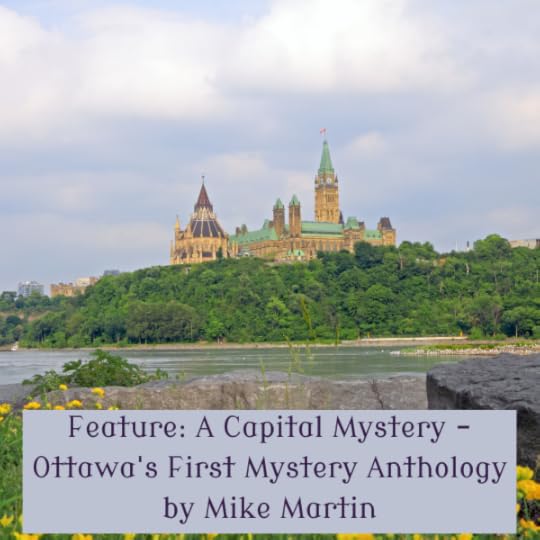 Feature: A Capital Mystery – Ottawa’s First Mystery Anthology
Feature: A Capital Mystery – Ottawa’s First Mystery Anthologyby Elizabeth S. Craig, @elizabethspanncraig.com
Today I’m thrilled to feature something special from Mike Martin, a long-time supporter of this blog and author of the beloved Sgt. Windflower Mystery series. Mike has co-edited (with Bernadette Cox) A Capital Mystery, the first Ottawa mystery anthology sponsored by Crime Writers of Canada. This collection brings together 21 local writers who’ve created stories set in the darker corners of Canada’s beautiful capital city. I’m delighted to share Mike’s introduction to this exciting anthology.
A note about features: I’m opening up one free feature spot per month for blog friends who have a new release or special project they’d like to share. These features are first-come, first-served and available to writers who’ve been part of this blog community. If you’re interested in a future feature spot, feel free to reach out via the contact form on my website.
Mystery Stories from the Heart of Canadaby Mike Martin
If you ever visit Ottawa, the capital city of Canada you are likely to come away with pleasant thoughts about the Parliament Buildings or the scenic Rideau Canal. Few would be thinking about murder and mayhem and madness. But that is exactly what 21 local writers have on their mind in the first Ottawa mystery anthology, A Capital Mystery. Sponsored by Crime Writers of Canada it takes readers on a tour of the darker side of this beautiful city.
Inside the pages of A Capital Mystery, you can visit Orleans, or the Market or Little Italy or Strathcona Park. You can stroll along the Rideau River or go west to Barrhaven or south to Greely. Have supper at a cute little diner near Parliament Hill or maybe sneak back in time for a drink at the Chaud in Hull on the other side of the river. Take a tour of the Karsh exhibit at the Chateau Laurier and see the Winston Churchill portrait which is back on display after being brazenly stolen in broad daylight. Explore the sights and sounds of the city that the authors of this anthology love to call home.
Reviewer James Terry (The Reading Room) calls the book “a love letter to Ottawa and its surrounding landscapes.” He adds, “It’s the kind of collection that makes you pause mid-sentence and think, Wait… I know that corner. I’ve walked that street. That moment of recognition, that thrill of seeing your own city reflected in literature, is at the heart of this anthology’s magic.”
A Capital Mystery has received praise from many mystery writers including Louise Penny, Rick Mofina and Melodie Campbell who said:
“A Capital Mystery is As Canadian as…a Winter in Ottawa! From clever whodunits to edge of seat thrillers, this anthology covers all the bases. Ottawa takes the stage front and centre in twenty-one crime stories by seasoned writers and fresh new voices. A historical mystery places us deftly into 19th century Bytown. Blackmailers and burglars terrorize our current day capital, and even the weather has a part to play. I could feel the chill of Ottawa’s icy winter in the opening story by one of Canada’s master writers. From ‘Captain Canada,’ to ‘the nuclear option,’ there is truly something for everyone in an anthology as Canadian as…a winter in Ottawa!”
Join us on a murder mystery tour of Ottawa. We hope you enjoy your stay.
A Capital Mystery is published by Ottawa Press and Publishing and available all over the world on Amazon.
Mike Martin is the Co-editor of A Capital Mystery, along with Bernadette Cox. He is also the author of the best-selling Sgt. Windflower Mystery series.
21 writers explore the darker side of Canada's capital city. Co-edited by Mike Martin @mike54martin . #CanadianMystery #MysteryAnthology #CrimeWritersOfCanada @elizabethspanncraig.com
Share on X
The post Feature: A Capital Mystery – Ottawa’s First Mystery Anthology appeared first on Elizabeth Spann Craig.

